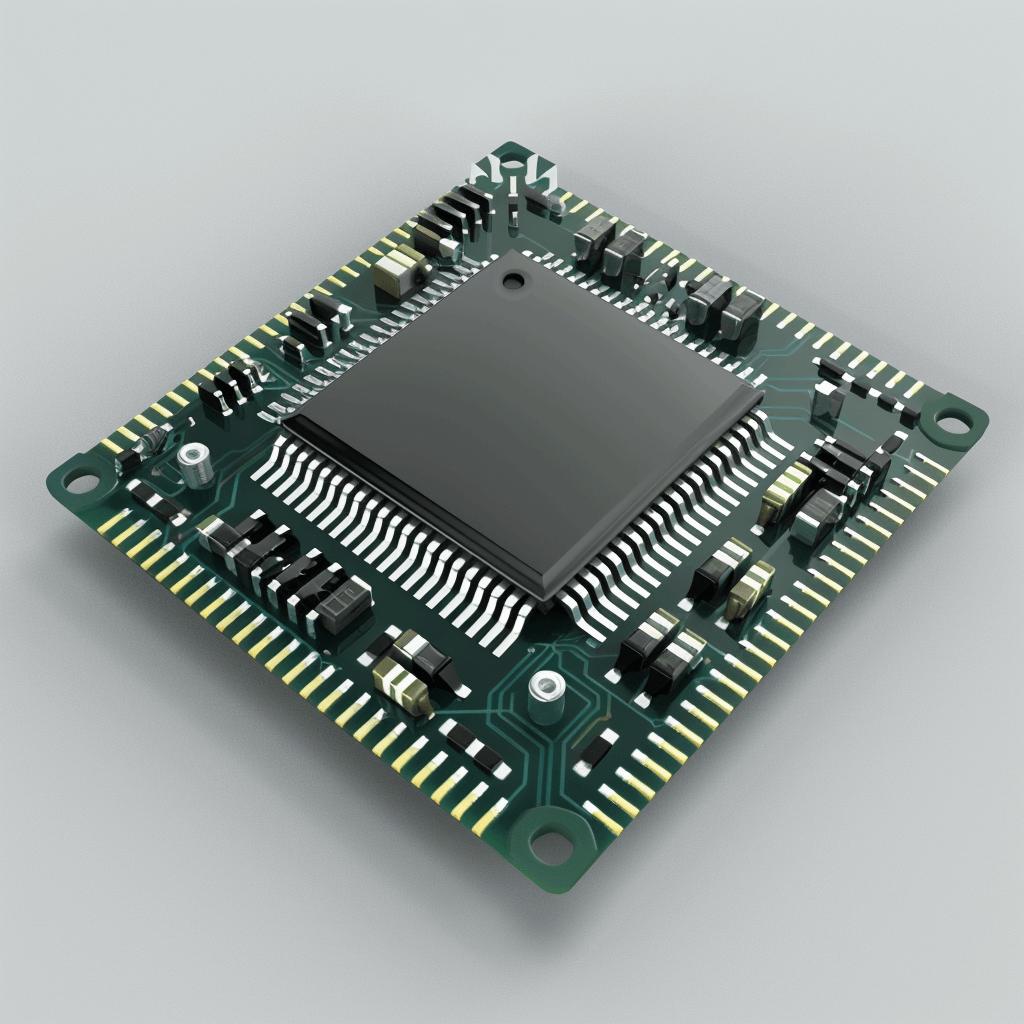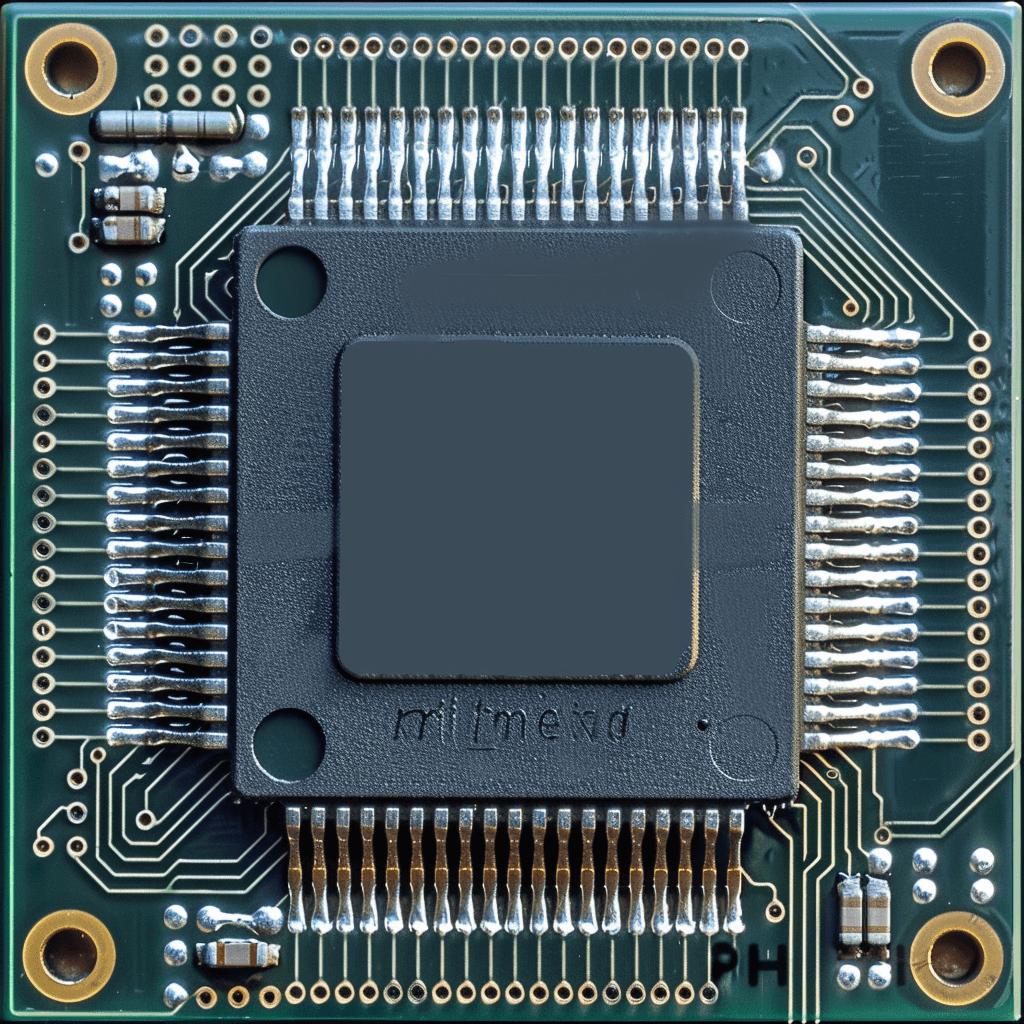
Exploring the Features of MSP430F5529 and MSP430F5638 Microcontrollers
Global electronic component supplier AMPHEO PTY LTD: Rich inventory for one-stop shopping. Inquire easily, and receive fast, customized solutions and quotes.
What are Microcontrollers?
Microcontrollers (MCUs) are small integrated circuits that are programmed to perform certain functions. They combine a processing core, memory, and programmable input/output peripherals. MCUs are widely employed in embedded systems for managing specialized functions, controlling devices, and processing data. Their applications are many, ranging from consumer electronics to automotive, industrial automation, healthcare, and beyond.
What are MSP430 Microcontrollers?
Texas Instruments MSP430 family of microcontrollers is noted for its low power consumption and high performance. These 16-bit microcontrollers are based on a reduced instruction set computing (RISC) architecture, which makes them efficient and adaptable to a variety of applications. The MSP430 series includes a wide range of devices with varying configurations and features to meet a variety of application requirements. Among these, the MSP430F5529 and MSP430F5638 stand out for their excellent capabilities and wide feature sets.
Video related to MSP430 Microcontrollers.
What is MSP430F5529?

The MSP430F5529 is a Texas Instruments microcontroller (MCU) that belongs to the MSP430 series. It is intended for low-power, low-cost applications and has a 16-bit RISC architecture.
Features of MSP430F5529
The MSP430F5529 microcontroller is a strong and versatile member of the MSP430 family, with multiple features that make it suitable for a variety of applications. Some of its important aspects are:
16-Bit RISC Architecture: The MSP430F5529 has a 16-bit RISC architecture, which results in efficient computation and low power consumption.
Integrated USB Controller: It has a USB 2.0-compliant interface that allows for easy integration with USB devices.
Rich Peripheral Set: The microcontroller has a wide range of peripherals, including timers, serial communication interfaces (UART, SPI, I2C), and analog-to-digital converters (ADCs).
Low Power Modes: The MSP430F5529 supports a variety of low-power modes, allowing it to function with little power usage in portable applications.
Large Memory Capacity: It has substantial memory, with up to 128KB of Flash and 8KB of SRAM to run complicated programs.
High-Speed Oscillator: The built-in high-speed oscillator allows for fast and precise timing operations.
What is MSP430F5638?

The MSP430F5638 is a microcontroller from Texas Instruments' MSP430 series that is optimized for low-power, high-performance applications. It shares many of the same features as the MSP430F5529, but it also has some additional capabilities.
Features of MSP430F5638
The MSP430F5638 is another prominent member of the MSP430 family, offering additional features and capabilities. Here are some of the key features:
16-Bit RISC Architecture: It, like the MSP430F5529, uses a 16-bit RISC architecture to provide efficient processing.
Enhanced USB Controller: It has a sophisticated USB 2.0 interface that offers more robust connecting choices.
Increased Memory: The MSP430F5638 has up to 256KB of Flash and 16KB of SRAM.
High-Resolution Timer: Enables more exact timing control in complex applications.
Low Power Modes: A variety of low power modes ensure that power consumption is kept to a minimum during inactivity.
Flexible Clock System: A flexible clock system enables dynamic modifications to match application requirements.
MSP430F5529 VS MSP430F5638
|
Feature |
MSP430F5529 |
MSP430F5638 |
|
Core Architecture |
16-bit RISC |
16-bit RISC |
|
Clock Speed |
Up to 25 MHz |
Up to 25 MHz |
|
Flash Memory |
Up to 128 KB |
Up to 256 KB |
|
RAM |
Up to 8 KB |
Up to 18 KB |
|
USB Connectivity |
Yes (USB 2.0 PHY) |
Yes (USB 2.0 PHY) |
|
Analog-to-Digital Converter |
12-bit, up to 14 channels |
12-bit, up to 16 channels |
|
Digital-to-Analog Converter |
No |
Yes (12-bit DAC) |
|
Security Features |
No |
Yes (AES encryption) |
|
Hardware Multiplier |
No |
Yes |
|
Applications |
Low-power applications |
Higher memory applications and security |
Specifications of MSP430F5529
Understanding the technical specifications of the MSP430F5529 is crucial for proper integration and application. Here are the main specifications:
CPU Speed: Up to 25 MHz
Flash Memory: 128KB
SRAM: 8KB
Operating Voltage: 1.8V to 3.6V
USB 2.0 Controller: Yes
Timers: 4
ADC Channels: 12-bit, up to 8 channels
Communication Interfaces: 2x UART, 2x SPI, 2x I2C
Low Power Modes: 5
Package Options: 80-pin LQFP
Specifications of MSP430F5638
The technical specifications of the MSP430F5638 highlight its advanced capabilities and suitability for demanding applications. Here are the main specifications:
CPU Speed: Up to 25 MHz
Flash Memory: 256KB
SRAM: 16KB
Operating Voltage: 1.8V to 3.6V
USB 2.0 Controller: Yes
Timers: 5
ADC Channels: 12-bit, up to 12 channels
Communication Interfaces: 2x UART, 2x SPI, 2x I2C
Low Power Modes: 5
Package Options: 100-pin LQFP
Applications of MSP430F5529
The MSP430F5529 is employed in a wide range of applications due to its diverse capabilities and low power consumption. Here are a few places where this microcontroller excels:
Portable Medical Devices
In medical equipment, the MSP430F5529's low power consumption and strong performance are crucial for guaranteeing long battery life and consistent functioning. Applications include:
Blood Glucose Monitors: Blood glucose monitors provide accurate and low-power measurements of blood glucose levels.
Portable ECG Monitors: Portable ECG monitors are designed to monitor heart activity while using minimum electricity.
Pulse Oximeters: An efficient way to measure blood oxygen levels.
Industrial Automation
In industrial contexts, the MSP430F5529's durability and peripheral integration make it suited for automation and control applications:
Sensor Interface: Connecting and processing data from a variety of industrial sensors.
Motor Control: Controlling motors in automation systems with precision.
Data Acquisition Systems: Data acquisition systems collect and process data from a variety of sources for monitoring and control.
Consumer Electronics
The MSP430F5529 is also present in several consumer electrical gadgets, which provide efficient processing and connectivity:
Wearable Devices: Enabling smartwatches and fitness trackers.
Home Automation: Home automation enables smart home devices such as thermostats and security systems.
Portable Gadgets: Powering handheld game consoles and e-readers.
Applications of MSP430F5638
The MSP430F5638 is used in applications that require additional memory capacity and robust communication choices. Some major applications include:
Advanced Medical Devices
The MSP430F5638 is excellent for more complex medical devices due to its greater memory and better USB controller:
Portable Ultrasound Machines: Portable ultrasound machines handle complex imaging data with precision.
Medical Data Loggers: They store and transport vast amounts of medical data.
Advanced Patient Monitoring Systems: Advanced patient monitoring systems offer real-time monitoring and comprehensive data processing.
Industrial Control Systems
In industrial environments, the enhanced features of the MSP430F5638 support more complicated control systems:
Programmable Logic Controllers (PLCs): Handle complex automation tasks.
Industrial Network Gateways: They enable connection between different industrial networks.
Smart Sensors: Smart Sensors process and effectively transmit sensor data.
High-End Consumer Devices
The MSP430F5638's capabilities are also used in high-end consumer electronics:
Advanced Wearables: Enabling smartwatches with more complicated features.
High-Resolution Home Automation Systems: High-resolution home automation systems enable complex smart home gadgets.
Portable Media Players: Portable media players can play high-resolution music and video files.
How to Integrate MSP430F5529 and MSP430F5638?
Optimal performance requires proper integration of the MSP430F5529 and MSP430F5638. Texas Instruments provides a variety of development tools to facilitate this process:
Development Boards
MSP430 LaunchPad: An economical and simple development platform for MSP430 microcontrollers.
MSP430F5529 Experimenter Board: This development board is specifically built for the MSP430F5529.
Software Tools
Code Composer Studio (CCS): Code Composer Studio (CCS) is an integrated development environment (IDE) for creating and debugging MSP430 programs.
EnergyTrace Technology: EnergyTrace Technology is a solution for monitoring and optimizing power consumption in MSP430-based systems.
Libraries and Middleware
MSP430Ware: MSP430Ware is a comprehensive collection of libraries, code samples, and documentation for the MSP430 microcontroller.
USB Libraries: Libraries used to implement USB connectivity in MSP430 applications.
MSP430F5529 and MSP430F5638 Considerations
When using the MSP430F5529 and MSP430F5638, consider the following variables to ensure best performance.
Environmental Conditions
Temperature: Keep the operating temperature within the stated range to preserve accuracy.
Humidity: Protect the sensor from high humidity and moisture to avoid damage.
Electrical Interference
EMI/RFI Shielding: Use shielding to protect the sensor from electromagnetic and radiofrequency interference.
Grounding: Use adequate grounding to reduce noise and signal interference.
Power Management
Low Power Modes: Use the sensor's low-power modes to save power in battery-powered applications.
Power Supply Stability: A consistent power source is required to sustain accurate measurements and dependable communication.
MSP430F5529 and MSP430F5638 VS Other Microcontrollers
To appreciate the advantages of the MSP430F5529 and MSP430F5638, compare them to other microcontrollers. Here are some essential aspects for comparison:
Accuracy and Precision
MSP430F5529 and MSP430F5638: MSP430F5529 and MSP430F5638 combine high accuracy and precision with minimal power consumption.
Other Microcontrollers: While some microcontrollers have better computing power, they also consume more electricity.
Peripheral Integration
MSP430F5529 and MSP430F5638: Extensive peripheral set featuring several communication ports and ADC channels.
Other Microcontrollers: Other microcontrollers may require extra components to include equivalent peripherals.
Development Support
MSP430F5529 and MSP430F5638: MSP430F5529 and MSP430F5638 are comprehensive development tools and resources from Texas Instruments.
Other Microcontrollers: Development assistance may differ, with fewer resources and tools available.
Conclusion
The MSP430F5529 and MSP430F5638 microcontrollers are powerful and versatile, with features suited for a wide range of applications. Their low power consumption, extensive peripheral set, and strong development support make them perfect for mobile medical devices, industrial automation, consumer electronics, and other applications. Understanding their features, technical specifications, and integration requirements can help you use these microcontrollers to improve the performance and dependability of your projects.
FAQs
What is the main difference between MSP430F5529 and MSP430F5638?
The main difference is in their memory capacity and peripheral set. The MSP430F5638 has greater flash memory (256KB vs. 128KB) and SRAM (16KB vs. 8KB) than the MSP430F5529.
Can I use MSP430F5529 for USB applications?
Yes, the MSP430F5529 has an embedded USB 2.0 controller, which makes it appropriate for USB applications.
How do I program the MSP430 microcontrollers?
The MSP430 microcontrollers can be programmed using Texas Instruments' Code Composer Studio (CCS) IDE, which includes complete programming and debugging capabilities.
What are the power consumption characteristics of these microcontrollers?
Both the MSP430F5529 and MSP430F5638 are designed for ultra-low power consumption, including numerous low-power modes to help increase battery life in portable applications.
Related Articles
- ·Stratix 10 VS Stratix V: Which FPGA is Right for Your Next Project?
- ·Intel Xeon Platinum 8454H vs AMD EPYC: Which Reigns Supreme?
- ·A Deep Dive into the AMD EPYC 4564P Processor
- ·MSP430F5438A vs MSP430F5529: A Detailed Analysis of Their Capabilities
- ·Comparing MSP430F6659 and MSP430F5419A: Which One is Right for Your Project?
- ·Demystifying 20 Microcontroller Projects for Beginners
- ·Unveiling the Ultimate Guide to Microcontroller Programming
- ·4680 Battery: Unveiling the Power Potential of the Next-Gen Cell
- ·Exploring the Case Studies on Arduino Applications
